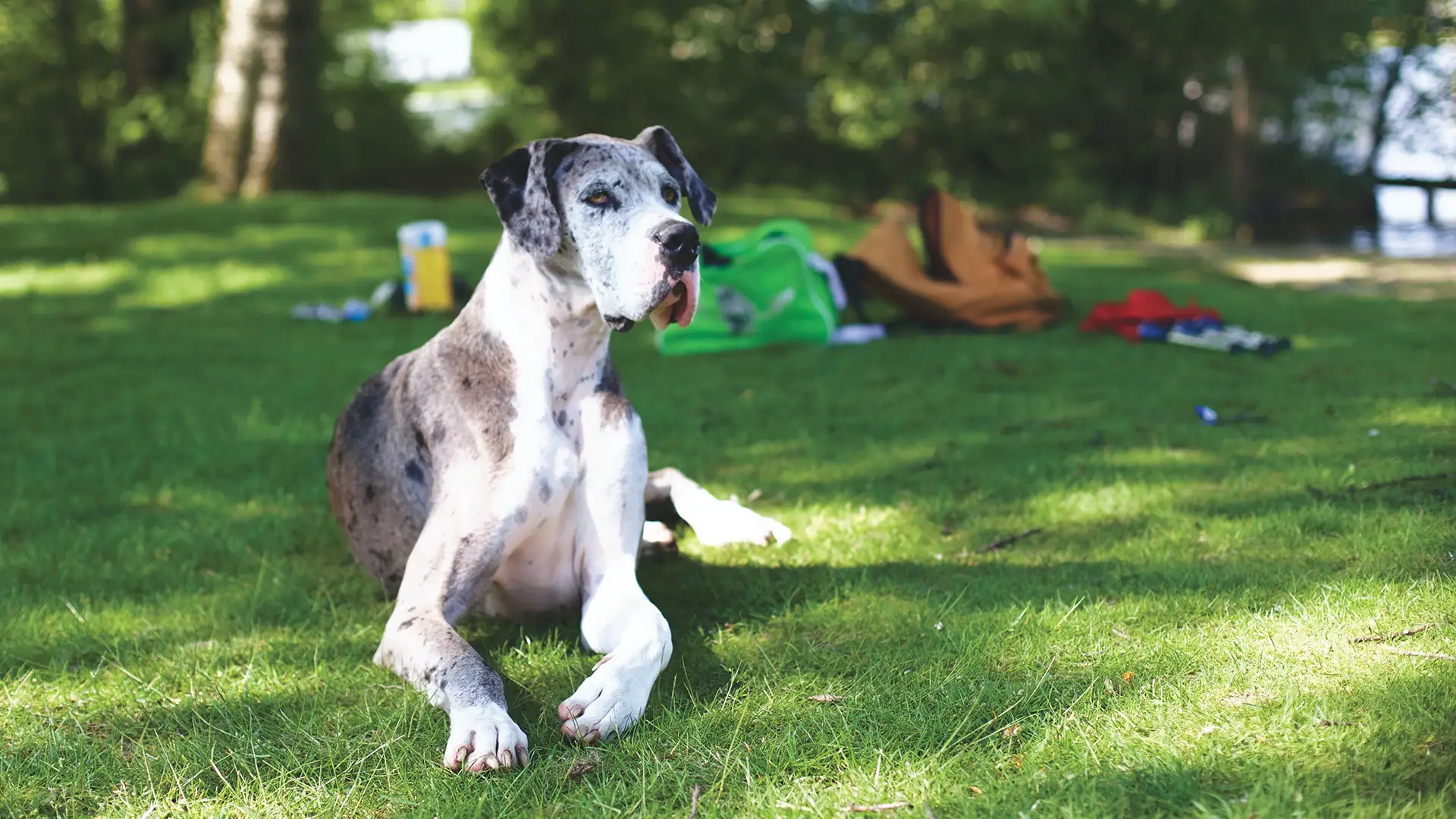When your furry loved one needs orthopedic surgery, you can rely on the experienced team at Makawao Veterinary Clinic to make things right. Dr. Matchett can take care of dogs, cats, and other pets with orthopedic surgery that treats injuries, as well as a variety of conditions affecting the musculoskeletal system.
Types of Orthopedic Surgery Available
Dr. Clayton Matchett uses advanced orthopedic surgery techniques to address most needs, including, but not limited to:
- Fracture repair
- Ligament reconstruction
- Tendon reconstruction
- Correction of limb deformity
Medial Patella Luxation (MPL) and Lateral Patella Luxation (LPL)
One of the most commonly diagnosed orthopedic conditions in small dog breeds is patella luxation. Although this condition primarily affects small breeds, it can also affect large and giant breeds. This dislocation can be medial or lateral, depending on which side the kneecap falls to.
Medial patella luxation (MPL) is a frequent cause of orthopedic lameness in both small and large breed dogs. This condition occurs when the patella, or “kneecap”, slips in and out of its natural position. Normally the patella sits in a groove in the femur and does not move side to side. However, sometimes the patella will be pulled out of this groove, or luxate.
Lateral luxation is most common in giant breeds, and more often both knees are affected, but it can also be unilateral. Mild cases might not have a symptom in the affected limb, while more severe cases can result in pain and loss of function. Lateral patella luxation refers to a dislocation away from the body, while medial is a displacement closer to the body. As the kneecap dislocates, it erodes cartilage and exposes the bone, leading to instability, pain, and arthritis.
Cruciate Ligament Repair (CBLO)
Dr. Matchett is trained and certified in the CBLO (CORA Based Leveling Osteotomy) technique. CBLO is a state-of-the-art cruciate ligament repair based on the Tibial Plateau Leveling Osteotomy, (TPLO).
The CBLO has many advantages, however, over the TPLO and other procedures. For instance, with a CBLO, the osteotomy site does not involve cutting into the joint, unlike the TPLO. Additional benefits of CBLO include:
- Potentially less articular cartilage damage over time
- Excellent short and long-term functional results
- More rapid healing compared to other CCL stabilization procedures, which can take several months of recovery time
- Greater stability
- May be performed on a young/juvenile patient because the procedure does not involve the growth plate
Our goal is to help your four-legged family member return to what he/she loves to do as soon as possible, and the CBLO is generally the best option in most cases.
Cranial Cruciate Ligament (CCL)
The cranial cruciate ligament (CCL) is one of the main stabilizers in the canine or feline stifle (knee) joint. Its purpose is to help maintain a normal relationship between the femur (thigh bone) and tibia (shin bone) in all angles and ranges of motion. To be more specific, the CCL prevents the tibia from sliding forward. The cranial cruciate ligament also prevents excessive internal rotation of the tibia and helps in limiting hyper-extension of the stifle.
Rupture of the CCL in the knees (stifles) of dogs is common. It is the equivalent of a person tearing their ACL (anterior cruciate ligament), or “blowing out their knee,” which is often related to significant trauma in humans. In dogs it is thought to be a degenerative condition of the soft tissue with the slope of the tibial plateau exacerbating the problem. If the slope is excessive, the femur slides back off the tibia during extension, putting significant strain on the cranial cruciate ligament.
When the CCL ruptures, (or tears), the stifle becomes unstable and the relationship between the femur and tibia is changed, leading to inflammation (arthritis) and pain. If the instability is left untreated, lameness frequently persists and arthritis will progress. Due to the instability in the stifle caused by the ruptured CCL, the medial meniscus can be pinched between the femur and the tibia causing irreparable damage. Subjectively, it appears that patients with CCL ruptures and meniscal damage experience more pain and more lameness than patients without meniscal damage.
TPLO VS. CBLO
The TPLO procedure was developed over 30 years ago to correct the anatomic issue that predisposes to cruciate rupture by reducing the tibial plateau angle. TPLO is meant to work by rotating the slope of the joint surface at the top of the tibia. With this, the forces that are typically counteracted by the cranial cruciate ligament will be reduced or even eliminated.
The TPLO is an effective procedure, however, because it does not stabilize the back and forward motion of the femur on the tibial plateau, long-term follow-up studies have shown that the joint cartilage will often break down.
CBLO was created as a refinement of the concepts of TPLO, and it helps to address some of the issues that could cause future complications that often occur with TPLO. One of those issues is the load bearing axis of the tibia moving further away from the anatomical axis of the tibia in dogs.
CBLO remedies this by inverting the rotation which results in the weight bearing axis being brought into alignment with the anatomical axis. All sizes of dogs and cats can be candidates for CBLO.
Rehabilitation After Surgery
Rehabilitation following a CBLO procedure can begin as soon as the pet goes home. The surgical area can be chilled with an ice pack for 10 minutes at a time, a few times daily. (Never attempt to make up for a skipped treatment by icing the area longer, as prolonged cold exposure can cause injury).
Passive range of motion exercise where the knee is gently flexed and extended can also help. It is important not to cause any pain when moving the limb. Let the pet guide you and always avoid twisting the leg. After the stitches or staples are out, increased leash walking can be helpful for strengthening the back legs. No running, jumping, or other excessive types of exercise should be performed for a full two months after surgery.
Meniscal Injury
The meniscus is part of the knee joint. The bones of all joints are capped with cartilage and provide a slippery surface where the bones contact each other. If the bones contact each other without cartilage, they grind each other down. In addition to the cartilage caps, the stifle joint has two “blocks” of fibrocartilage in between the bones. These blocks are called the menisci and serve to distribute approximately 65% of the compressive load delivered to the knee. The only other joint with a meniscus is the jaw (tempero-mandibular joint).
When the cruciate ligament ruptures, the medial meniscus frequently tears and must either be partially or completely removed. Meniscule assessment is usually done at the time of cruciate ligament surgery. Pets with meniscal damage may have a clicking sound when they walk or when the knee is examined. To achieve a definitive diagnosis, the menisci must actually be inspected during surgery.
What Medical Conditions Can Orthopedic Surgery Correct?
When your animal companion needs orthopedic care, consider contacting Makawao Veterinary Clinic to determine whether orthopedic surgery is a treatment option. We commonly repair the following:
Fractures and Breaks
If your animal companion suffers any kind of fracture from an accident or other injury, it’s essential to get them to your veterinarian as soon as possible. The sooner the orthopedic surgery can be performed, the better the possible outcome.
Rupture of Ligaments
Rupture of ligaments can cause your furry loved one to become lame. When this type of injury occurs in both legs, the level of lameness can be devastating, impacting your pet’s emotional wellbeing and overall physical health. Fortunately, there are often surgical solutions or regenerative medicine techniques that can help heal the injury.
Not sure if your pet needs an orthopedic evaluation? Some of the red flags associated with joint, bone and ligament problems include:
- Swollen or tender joints
- Limping or favoring one or more legs
- Stiffness when getting up
- Difficulty getting around (climbing stairs, jumping, playing, running, etc.)
- Whimpering, whining or crying in pain when touched or while moving
If you’ve noticed any of these things, it’s time to book a professional orthopedic evaluation. The sooner we can pinpoint the problem, the sooner we can get your pet back on the path to good health. Contact Makawao Veterinary Clinic today to make an appointment. We’re here to help.
Makawao Veterinary Clinic
444 Makawao Avenue Suite A
Boarding & Grooming Suite B
Makawao, HI 96768
Clinic: 808-572-9003
Large Animal Team: 808-281-1087
Boarding & Grooming: 808-866-2109
Also serving Makawao, HI and surrounding areas.
Hours
Clinic Hours
Monday – Saturday: 8:00am – 5:00pm
Sunday: Closed
Boarding & Grooming Hours
Monday – Sunday
8:00 am – 12:00 pm
1:00 pm – 5:00 pm




